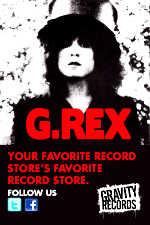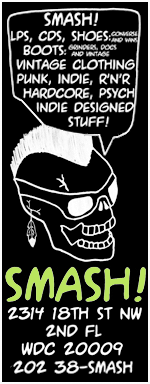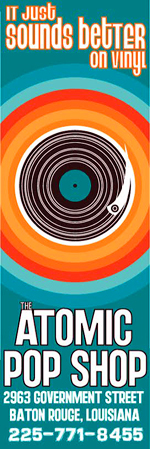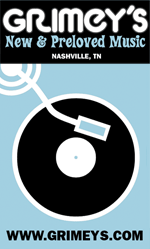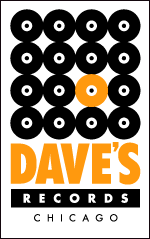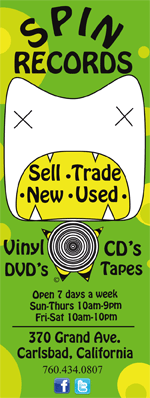
Today, bassist-cellist-composer-bandleader Ron Carter is described without overstatement as a jazz ambassador, but flash back to the early 1960s and he was but one of many skilled young players on the scene. As talent attracts talent, Carter’s debut album Where? is as notable for its sidemen as it is for spotlighting an artist destined for greatness. On March 29 Craft Recordings brings out a fresh edition of this 1961 album on 180 gram vinyl as part of their ongoing Original Jazz Classics reissue series. Where? remains a pleasurable listen, its appealing air of the casual enhancing subtle inventiveness.
Initially released on Prestige Records’ New Jazz subsidiary (it is this edition that Original Jazz Classics and now Craft Recordings have reissued), Where? has been described as a likeably minor effort. While not wrongheaded, it’s an assessment that perhaps overlooks the value that accrues as time is spent with the recording. The lack of desperation to impress and the avoidance of safe choices do come into focus.
Glancing at the personnel, a curious party could be forgiven for thinking that either Prestige or Carter stacked the lineup to ensure an immediate impression. The beautifully unique Eric Dolphy is here on alto saxophone, bass clarinet, and flute. A more subtly distinctive explorer of jazz’s essence, Mal Waldron is the pianist. The ever dependable Charlie Persip is the drummer and the equally reliable George Duvivier is on bass as Carter plays cello on three tracks.
But Where? connects somewhat like a workshop session as Carter brings two originals (opener “Rally” and “Bass Duet”) to a program that’s rounded out with a pair of jazz standards (Hammerstein and Romberg’s “Softly, as in a Morning Sunrise” and Sy Oliver’s “Yes, Indeed”) and two by Randy Weston, a pianist-composer noted as a contemporary of the musicians in the band (the title track and closer “Saucer Eyes”).
Carter and Dolphy played together in Chico Hamilton’s group prior to this session, and Carter also bowed cello on Dolphy’s Out There (recorded in August 1960 and released in September of ’61), where Duvivier played bass. And so, warmth stemming from familiarity augments a blend of adventurousness and tradition. Notably, Where? has been reissued at least once as Dolphy’s album, an insulting circumstance but unsurprising given the nature of the record business.
As made clear in Joe Goldberg’s original notes for Where?, Dolphy was already high of profile and furthermore controversial as this record was being made, so his name given prominence over Carter’s on subsequent editions was probably inevitable, particularly after Dolphy’s early passing. But the posthumous usurping of the leadership role is still pretty galling considering that Dolphy doesn’t even play on two tracks here.
Regarding controversy, Goldberg also frames Where? as an example of the then nascent New Thing. That’s not inaccurate, but it should be noted that if clearly adventurous, Carter’s album isn’t a challenging listen. To the contrary, Where? goes down easy and has led some to misconstrue the bassist-cellist as timid on his first recording as a leader.
Timidity isn’t an unreasonable conclusion if one’s expectations are primarily shaped by Out There, but getting cozy with Where? brings the LP’s hardy nature to the fore. “Rally” and “Saucer Eyes” bookend the record with vibrant and wide-ranging ensemble play, the former moving at a fast clip and quite boppish in structure but standing out through the soloing: first the expansiveness of Carter’s bowing, tough but limber, next Dolphy on bass clarinet including a brief puckish quotation of “Pop Goes the Weasel,” and then the gripping intensity of Waldron.
“Saucer Eyes” is also up-tempo as Dolphy is heard on flute and the group’s collective flair is very much of the moment. Thankfully matters don’t get too sophisto, as the foundation, with Carter large on bass and Persip giving his snare a major workout, is sturdy. There is a light prettiness in Dolphy’s blowing, but worry not, for he avoids foreshadowing the hairy-chested flute horrors to come in the ’70s, never once huffing out hackneyed moves as a virtue.
Dolphy sounds even better in “Yes, Indeed,” Oliver’s gospel-jazz number where the fluting ushers in a hint of the cosmopolitan (think Mancini). The soloing by Dolphy and Waldron is appealing, but it’s Carter’s pizzicato action on the cello that’s the highlight of the track as Duvivier drops the anchor and Persip cracks the traps.
“Bass Duet” is exactly what’s foretold by the title, Carter and Duvivier getting down to business in a bluesy mode and with Persip and Waldron adding dimension. It’s this track, frankly diverse from the post-bop norms of the period, that lends Where? a significant portion of its workshop atmosphere (it’s a safe assumption it was composed in the studio).
The decision to stretch out a bit on the chestnut “Softly, as in a Morning Sunrise” gives everyone an opportunity to shine, in particular Dolphy, who is documented playing it live in Germany in December of ’61. He’s as one-of-a-kind as ever on alto as Carter effectively furthers his case for the cello as a legit jazz instrument.
But it’s the title track, with the tempo slowed, Waldron dishing a beautiful figure on the keys, and Persip handling the brushes with aplomb, where Carter gets soul deep on the cello. Mid-way through, the swing gets turned up a few notches as the specialness of Where? is driven home. Lacking in any grandiose moves, it’s the accumulation of smaller confident gestures that makes this album a keeper.
GRADED ON A CURVE:
A-













